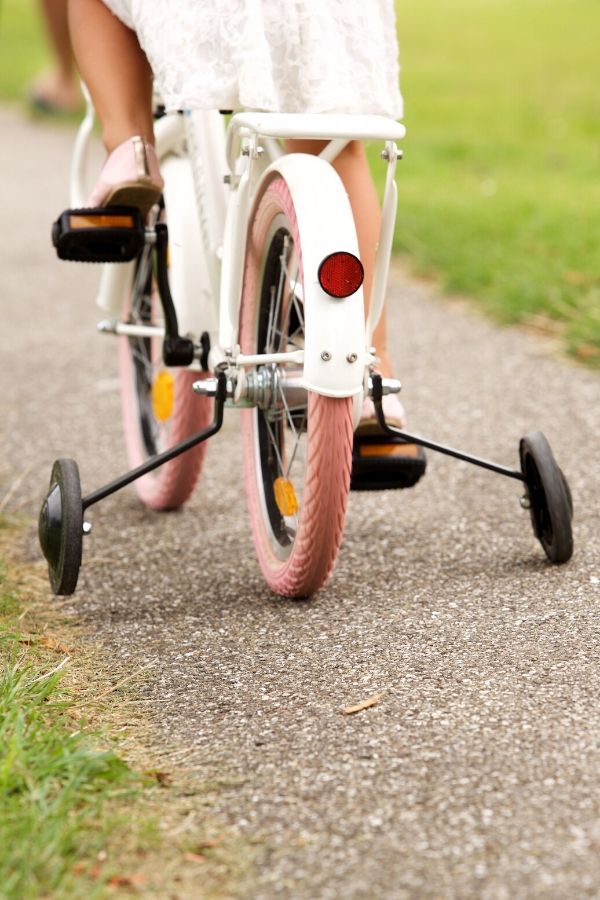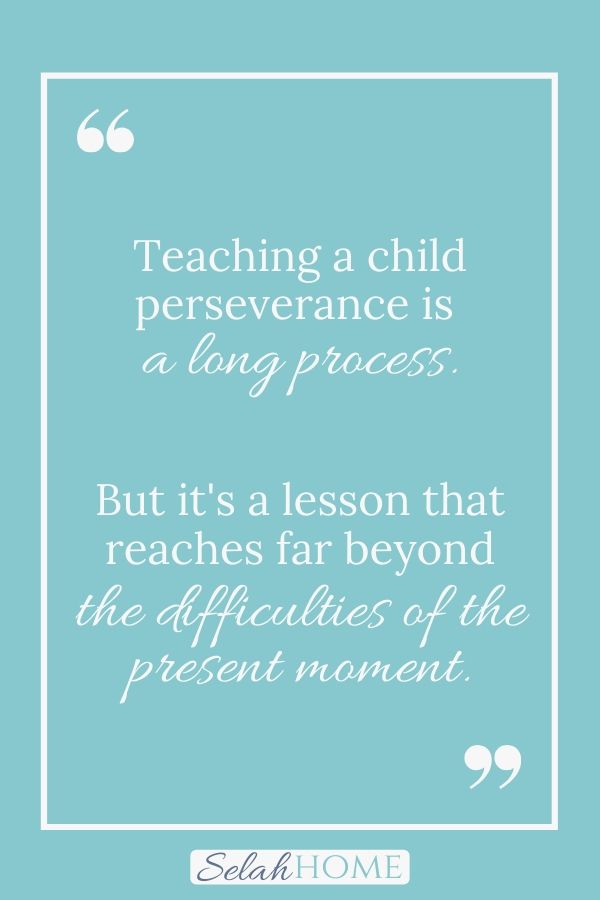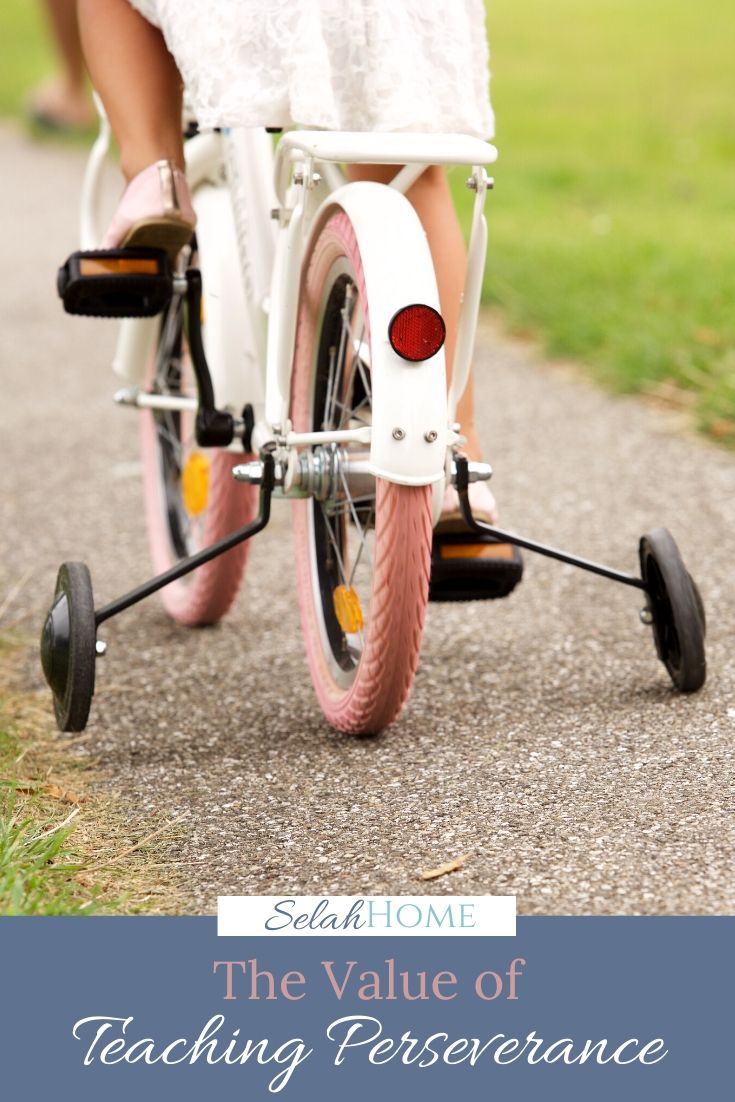Whether or not you have an education degree or experience in a classroom, simply being a parent qualifies you as a teacher. Parents spend a lot of time training everything from building strong character to tying shoes.
Countless items make the list of essential skills, traits, or habits that parents teach their children.
But instilling the value of perseverance for kids is likely high on that list for most parents. Especially in today’s culture.

We live in a society where speed is key to consumer satisfaction. We’ve come to expect quick and easy answers to most problems.
Whether it’s the shortest line, fastest download, or speediest delivery, we love when things are swift and efficient.
But life itself doesn’t work that way.
Successful careers, strong families, and rock-solid character are built over a period of time and a number of different experiences.
A fulfilling career doesn’t happen at the snap of your fingers. A happy family isn’t created by the push of a button. And the people who truly make a difference in the world didn’t choose their path because it was easy.
In fact, some of the most influential people in history have a story to tell only because they persevered through adversity.
Our natural tendency may lean towards making things as easy as possible for our children, simply because we love them. But if we truly want them to live a rich and fulfilling life, we must help build perseverance for our kids.
A bike riding disaster…
While all of that sounds grand and noble, in reality it begins on a much smaller and simpler level. For us, it all started when our oldest learned to ride a bike.
When our daughter was around four, we started working with her to transition from a tricycle to a larger bike with training wheels. She was super excited, but also a little bit nervous about this less sturdy option.
She desperately wanted to ride the bicycle, but was insistent that we stay by her side and hold on so she wouldn’t fall.
One day, at a local park, my husband decided to stretch her a little bit. As they were traveling down the slightest of hills, he let go. The bicycle picked up a tiny bit of speed as it coasted down the incline.
Then much to our surprise, our daughter panicked. She let out the loudest scream I’d ever heard from such a small mouth. She lost control of the bike and tumbled into the grass.
It might seem insensitive, but it was all my husband and I could do to keep from laughing.
She’d picked up very little speed and was coasting down a smooth sidewalk. Plus, she was covered from head to toe in protective gear. She had landed softly and safely.
Her piercing scream and the alligator tears that followed seemed a bit dramatic.
However, she obviously disagreed with our assessment of the situation. She was upset with my husband for letting go and terrified to get back on the bike.
So, we smothered our amusement and were quick to provide comfort and love.
But we also insisted she give it another go.
Fear to move forward…
It took quite a while to get her back on the bicycle. And when we finally did, we were again surprised at the events that followed.
We expected her to be nervous for a bit and then jump right back into conquering this new challenge. However, that’s not quite what happened.
When she finally returned to the bike, she was terrified to move. After much encouragement from my husband, she gave the pedals the tiniest of pushes.
She literally moved forward an inch and stopped. And then she pedaled another inch. And stopped.
This continued inch after excruciating inch. She was bound and determined to keep control of that bike.
Her fear of falling again was holding her back.
The only way my husband convinced her to pedal faster was when he held onto the bicycle with two hands and promised not to let go. As soon as he stopped assisting, she returned to a snail’s pace.
So, my husband taught her how to brake, thinking that would give her confidence. If she knew how to stop, she might feel safe to move forward more quickly.
But after learning the power of her brakes, the problem got worse! She pedaled an inch and then slammed on the brakes.
This process repeated over and over until she was exhausted, we were frustrated, and she had only moved a few feet.
Check out my resource, “10 Tips for Teaching Resilience to Kids“ for ideas on how to encourage perseverance in your child.
A decision to make…
We went home that day unsure of how to proceed. The fear she felt was real. We knew it was justified.
We understood why she wanted to quit. In her mind, the task seemed insurmountable and no longer worth the effort.
We had a choice to make. We could let her stop trying and revisit the skill in a few months when her recent fall was a distant memory. Or we could give her a few days to recover and try again.
We chose the latter. And believe me when I say, it wasn’t easy.
We spent countless days at parks, on sidewalks, and in our driveway watching and encouraging as she pedaled inch by inch across the ground.
She was completely fine until we took our hands off the bike. Then she cried and pleaded with us to grab back ahold. And she refused to move faster than a caterpillar.
But we knew something she didn’t.
She would never learn to ride a bike if we didn’t eventually let go. The training wheels would stay on inevitably if she wouldn’t pedal faster.
So, we held our ground and tried to find a balance between loving her through the fear while remaining firm in our request for her to persevere.
A hard lesson in perseverance…
My husband slowly earned back her trust as he pushed her up and down the sidewalk, holding on until they came to a stop. And when he insisted that she ride on her own, he faithfully walked beside her no matter how long it took to travel down their intended path.
To be honest, I don’t remember how many times we repeated this scenario before she overcame her fear. I’m not sure the number of park trips or driveway circles we made before she learned to pedal at a reasonable speed.
But I do recall how difficult it was to watch her struggle. And how much patience it took to coach her through the process. The temptation was strong to throw in the towel and return to the safety and ease of her tricycle.
Then one day all the hard work paid off…she was riding.
And she hasn’t looked back.
Now, at seven years old, she speeds up and down the sidewalk without training wheels and with all the confidence in the world.
She tries riding with no hands and attempts standing up. She makes tight turns and does figure eights.
She’s fearless. And I’m not sure she even remembers when she wasn’t.
Building perseverance for kids in a process…
Our daughter would have eventually learned to ride a bike even if we hadn’t pushed her past the fear of falling. But we would have missed a perfect opportunity for a lesson in perseverance.
That summer our little girl discovered within herself the strength of an overcomer.
She realized the value of persisting through a challenge. She felt the satisfaction that comes with hard work.
Our daughter learned to face fear with bravery and meet weakness with courage.
We were extremely proud of her. But we also knew it was only the first of many similar lessons if our goal was to build perseverance for our kids.

A single battle won or fear conquered doesn’t create the kind of perseverance a child will need to successfully navigate real world challenges.
To lay a solid foundation of determination and inner strength requires countless experiences, built one upon another, and played out over the course of childhood.
It’s a slow and sometimes painful process. For everyone involved.
But the results of those character-building life lessons hold potential far beyond the struggles of the present moment.
Heroes in the making…
A child whose mom teaches her never to give up could be the one who finally finds the cure for cancer.
A kid whose dad instills a little bit of grit might have what it takes to become a future president or world leader.
A young mind that learns the power of persistence could invent the next Google or start the next fortune 500 company.
The possibilities are endless.
But those dreams might never be realized without parents who recognize the value of building perseverance for their kids and take advantage of opportunities to do just that.
It’s definitely not the quick and easy path. It requires a tremendous amount of patience, a lot of determination, and probably more than a few tears.
But a child with a parent beside them whispering, “Never give up,” can accomplish just about anything.

Do you have any great ideas when it comes to developing perseverance for kids? Or maybe a story to share? Please leave a comment below!





Leave a Reply